Renovation brings new life to a classic home
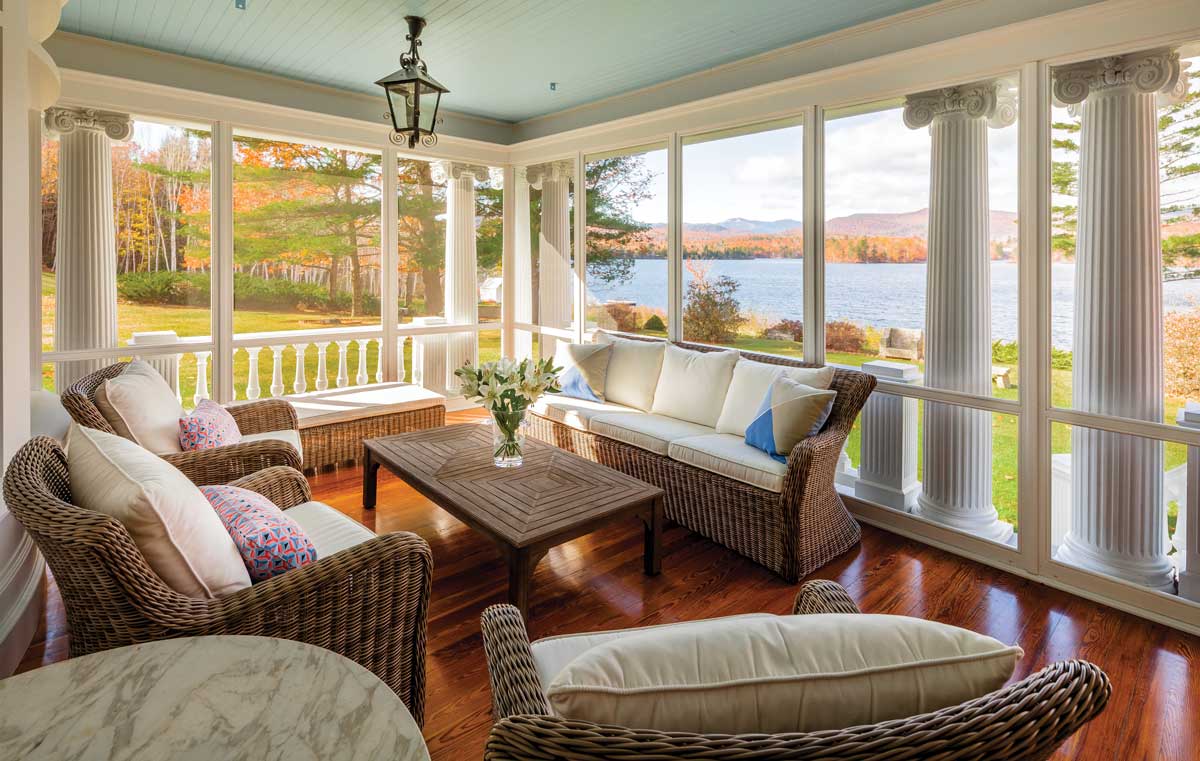
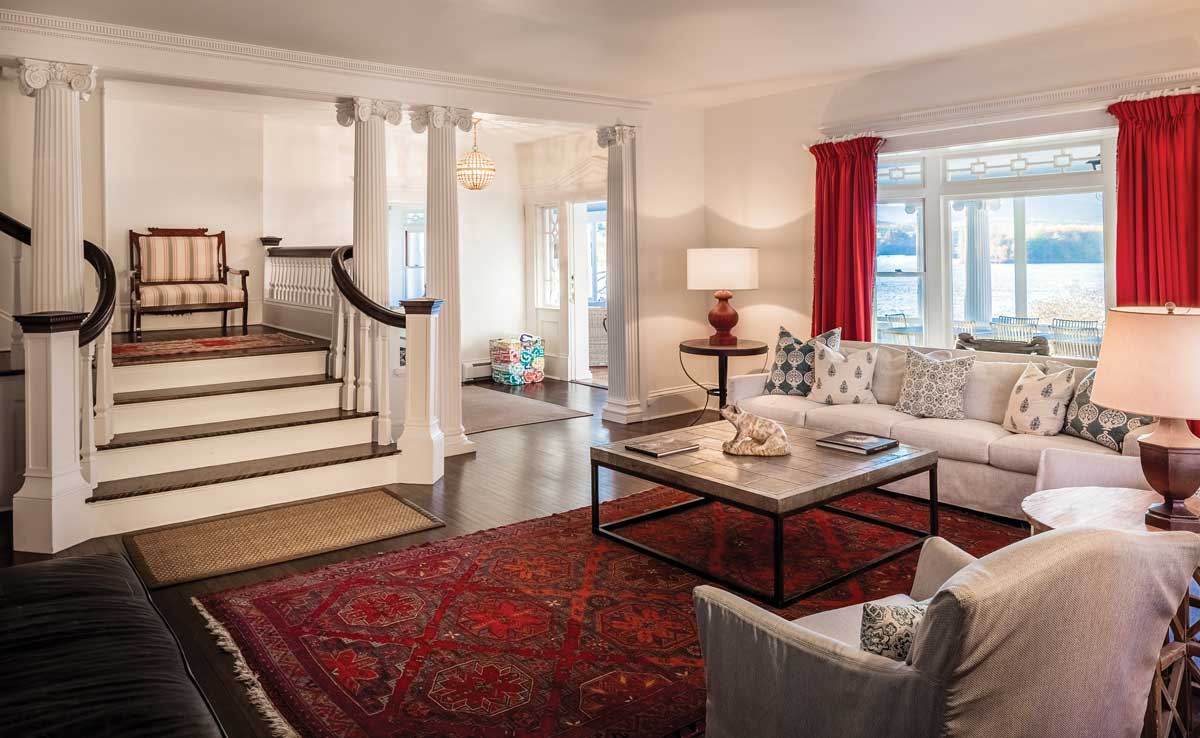
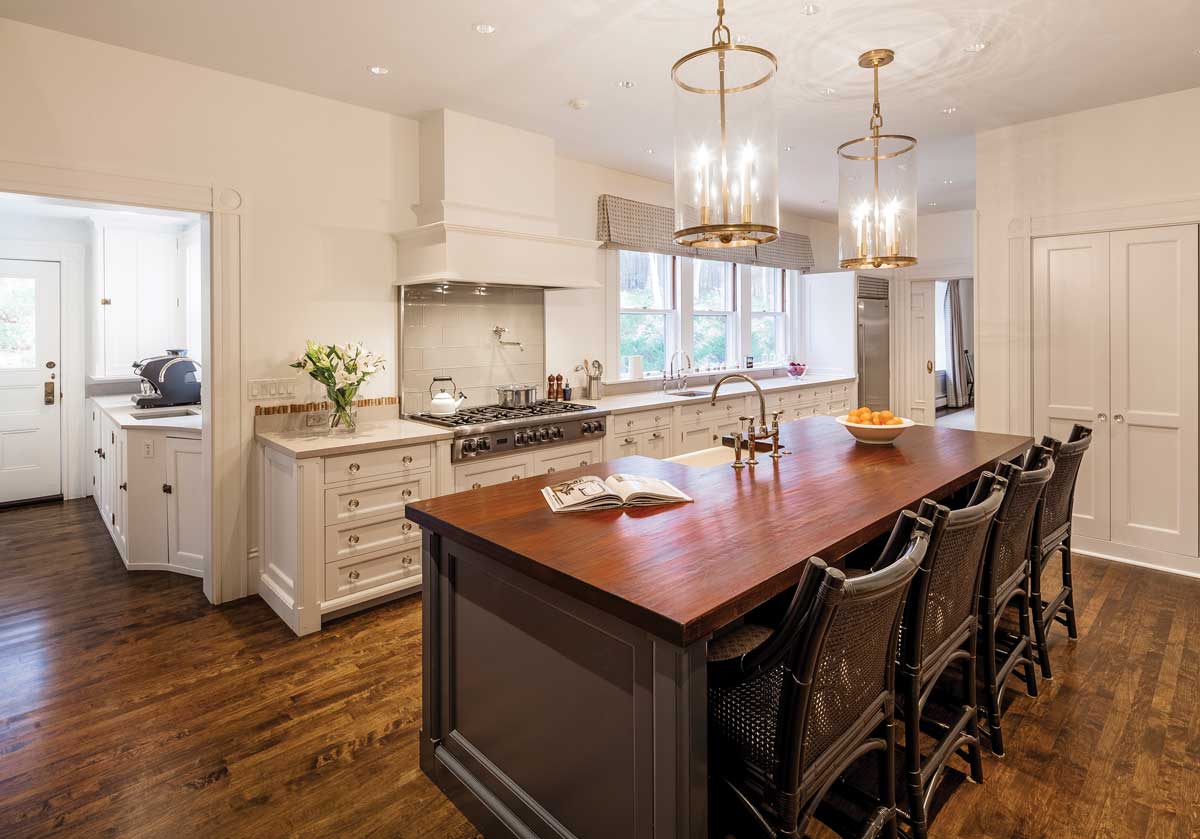
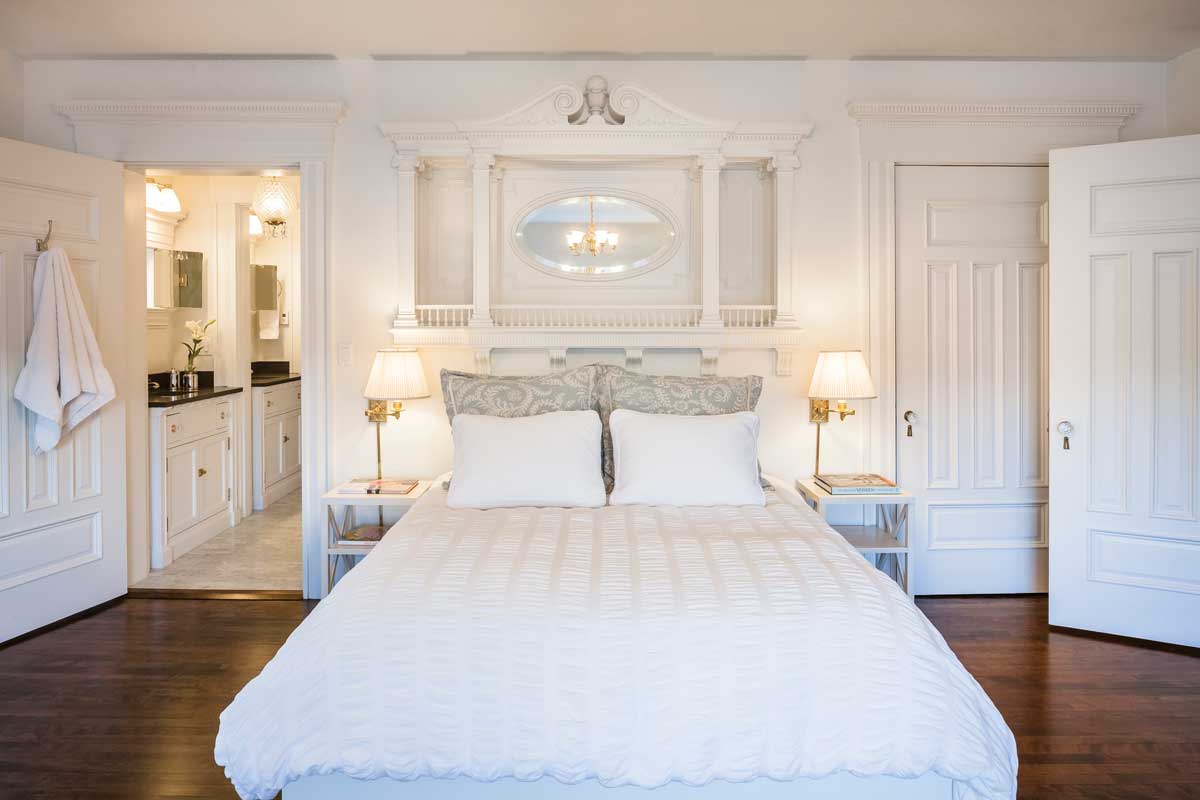
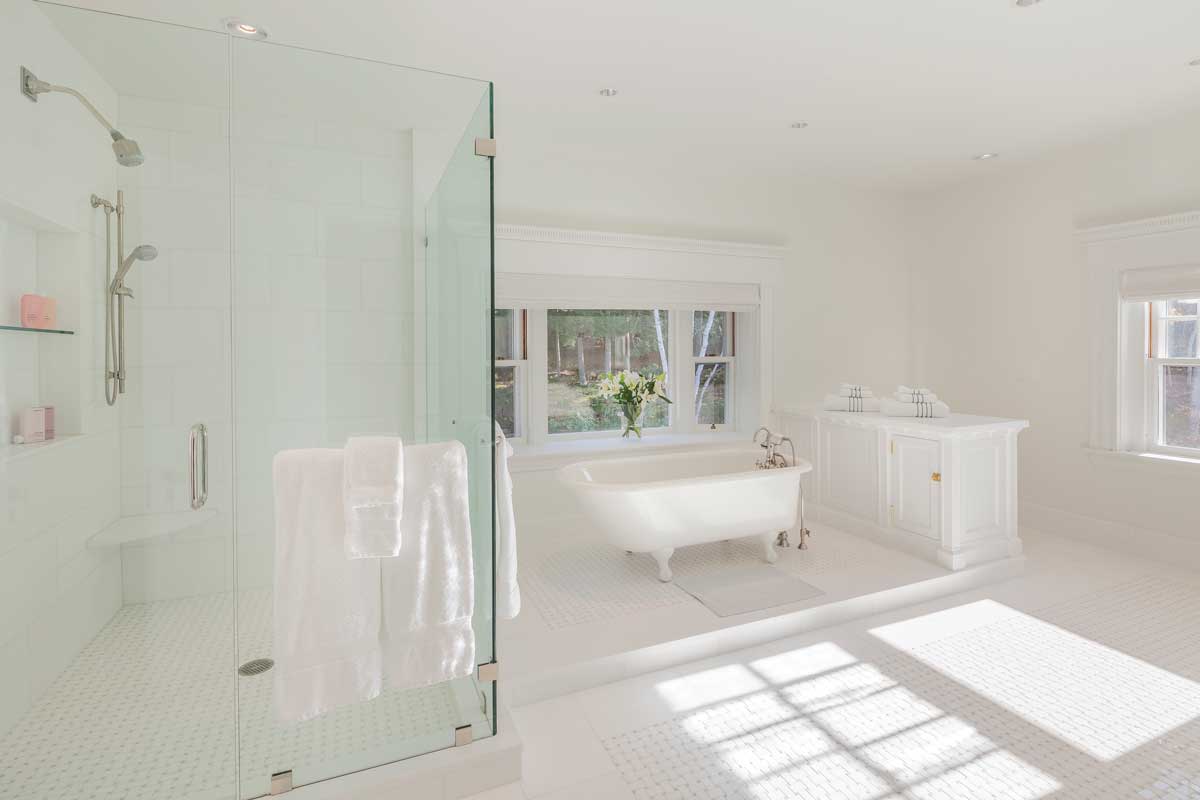
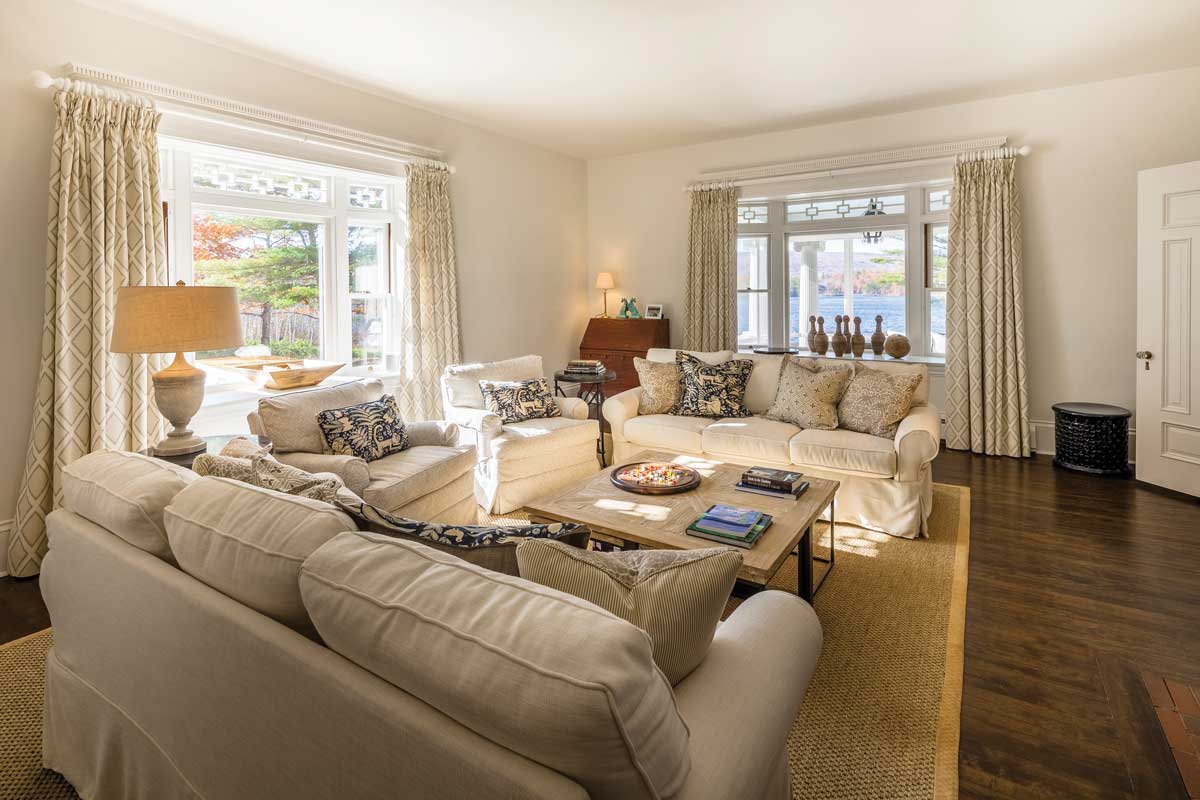
<
The 9,000-square-foot house orients toward the lake with a front porch supported by a series of Corinthian columns. The front steps widen as they descend and the handrails curve outward in a graceful, welcoming embrace. This motif is repeated inside, where the broad staircase terminates in the living room with similar curving rails. When Conforte built a new stairway for the side door, he was careful to match that curve.
“It was quite a job,” he said. “Straight is easy; a curve requires careful work.”
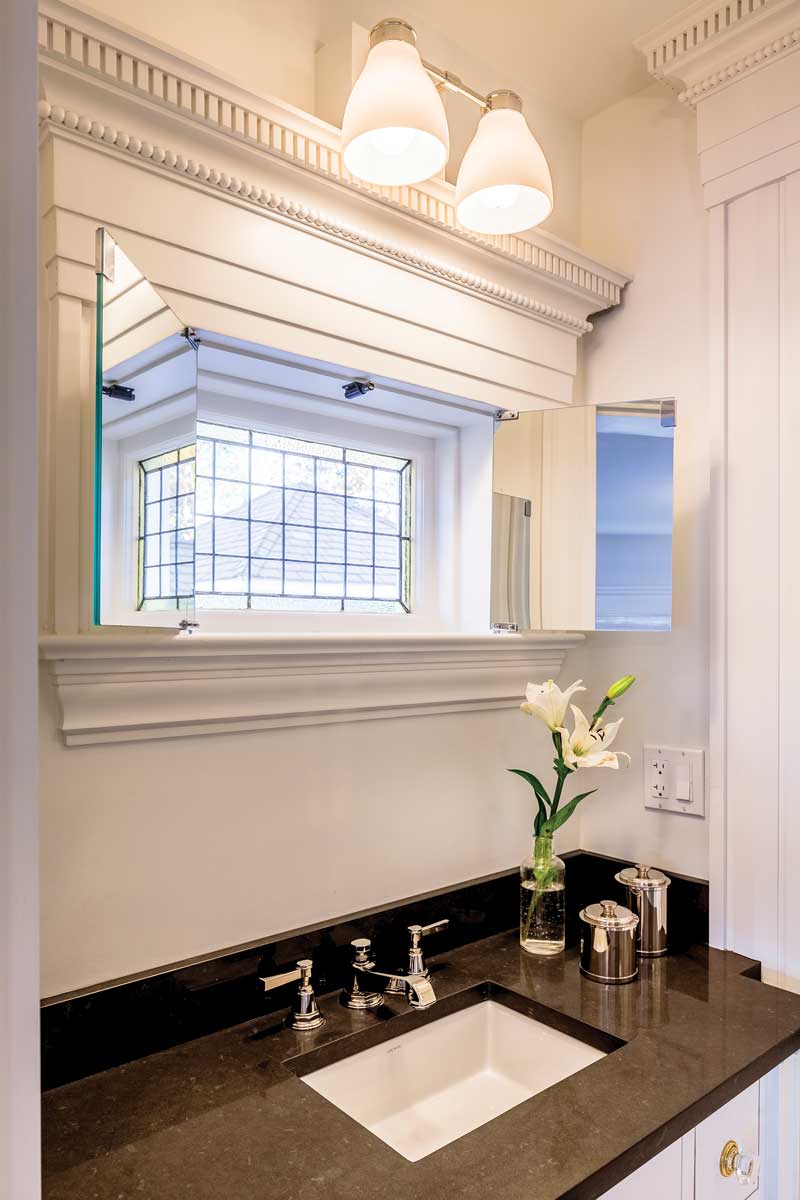 He and Attardo put a great deal of care into the new kitchen. This became possible when they removed a narrow servant’s staircase. Now the large kitchen stretches across the back of the house and connects directly with the living rooms; it had previously been a landlocked, difficult-to-reach space.
He and Attardo put a great deal of care into the new kitchen. This became possible when they removed a narrow servant’s staircase. Now the large kitchen stretches across the back of the house and connects directly with the living rooms; it had previously been a landlocked, difficult-to-reach space.
The kitchen boasts superb new appliances, a large central island, an informal dining area and a pantry with the largest, deepest stainless steel sink the owners could find. Conforte built new cabinetry that matches the 1908 originals. He re-used original elements whenever possible, and even cleaned and installed a toilet that dates to the house’s origin, complete with wall tank and pull chain. The old claw-footed bathtub now has pride of place in the master bathroom.
“Taking out that back staircase also gave us the room to install bathrooms upstairs,” Attardo pointed out. “The master bedroom had its own bathroom, but the other three bedrooms upstairs shared one bath.” He and Conforte also installed a guest suite on the first floor, bringing the number of bedrooms to five.
Conforte took his design cues from existing elements as he replaced rotting wood, built new pocket doors, put a new deck and railing on the second-floor porch, and otherwise updated what needed repairing and replacing. A north-facing section of the slate roof required repair; Victor Wright of Waterboro’s Heritage Roofing carefully matched the original Munson slate with pieces from his own collection so that the roof looks seamless.
Of all the work, the painter who started the process did the most.
“It took Allen Dotson two-and-a-half years to take down all the old peeling paint and apply new paint,” the homeowner said. “He told me that it was the crowning achievement of his career.”
All of the old paint was stripped off down to the original wood, inside and out. The complexity of the trim, combined with repairs to cracked and decaying pieces, called for slow, patient work.
The large rooms are furnished with unassuming, comfortable furniture that is right for a lakeside vacation home, but also suits the house’s architectural distinction.
“We never did any conscious interior design. We have let the house be decorated as it goes,” the homeowner said.
She and her family use the house for year-round getaways, and now entertain the way she and her husband had always wanted to.
“We hosted a dinner for the historical society and seated 60 people,” she said with a smile. “For Thanksgiving, we had 50, for a family reunion, 75.”
Charles Garcelon would be proud.
Regina Cole is a freelance writer who lives in Gloucester, Massachusetts. She writes about architecture, interior design, and the history of the American decorative arts for many national and regional magazines.






